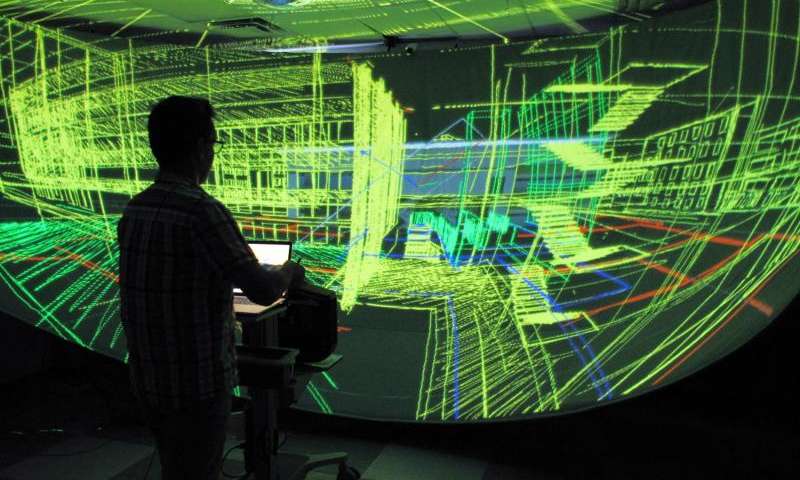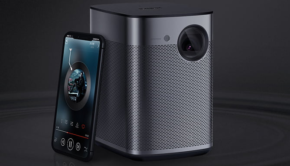Computers Manifest the 3D Dream
It’s a fact — computers are going 3D in the most imaginative way.
Image credit: Hybridlab, University of Montreal
Though we can’t manifest objects out of thin air – yet – research endeavors led by a group of researchers at the University of Montreal sure make it seem possible. They’ve made the SIM game a virtual reality, and the controller is an iOS tablet.
The Montreal team is challenging the established expectations for the traditional cursor, simple indicators that identify the location of user input, and making it into a 3D controlling plane, instead. And as easy as clicking a mouse is, they have specifically designed the interface to be simple and intuitive for the end-user as well. You simply “sweep” the 3D cursors through, says Professor Tomás Dorta from University of Montreal’s School of Design.
For instance, as he explains, for the manipulations of objects, the users can use gestures and movements such as pinching and orientation. A 3D trackpad is used for navigation, orbit, tilt, and movement, and 3D rendering effects for texture and lighting are also possible.
To help people better visualize how this works, the team recently unveiled a teaser video for the Hybrid Virtual Environment design system under their startup, Hybridlab Inc.
Though artistic talents certainly help front-end design and freehand sketches, integrating the sketching effects into the virtual environment requires a completely different set of tools — a projector, mirror, and special fabric. The 3D effect itself is an optical illusion created by a widescreen high-resolution projector and a 16-inch dome mirror onto a spherically concave fabric screen with 5m-diameter. Other hardware aspects include a laptop, a sensor-based tracking system attached to two tablets to drive the system.
Professor Dorta explains the backend integration: “The software takes care of all the networking, scene management, 3D graphics and projection, and also couples the sensors input and iPad devices. The iPads run a Satellite application, which serves as the user interaction front-end of the system.” The team notes that the Hyve-3D technology is built to be flexible — the software can work on conventional 2D displays and is easily integrated into other connected devices like smartphones and watches.
We’ve asked the team to provide some information for interested consumers.
Q: When will the 3D technology be available for consumers and at what cost?
A: The Hyve-3D, the immersive collaborative system is available now. Its cost is around 20k US$.
Q: Are there specific hardware and software requirements for the Hyve-3D?
A: No specific hardware is needed except a handheld device using, for the moment, iOS. We will be licensing the 3D cursor technology that can be integrated in other systems and other uses.
$20,000 is quite a bit of pocket money, most likely outside the monthly budget for an average hobbyist designer. But, as emphasized by the university researchers, Hyve-3D was created to aid co-design inside virtual environments beyond the IMAX effect. As Professor Dorta states, “It’s about rethinking how humans interact with computers as part of the creative process.”
There’s an obvious potential here to benefit the medical, architectural, and engineering field and quite possibly transform entertainment industries like movie making and animation design as well. And as the technology plays more intricate role in practical applications, we expect it to become more available, and affordable, for small-scale businesses and, eventually, the average consumer.
_____
August 17, 2015 — Hyve3D team sent in a clarification regarding its commercial product:
















